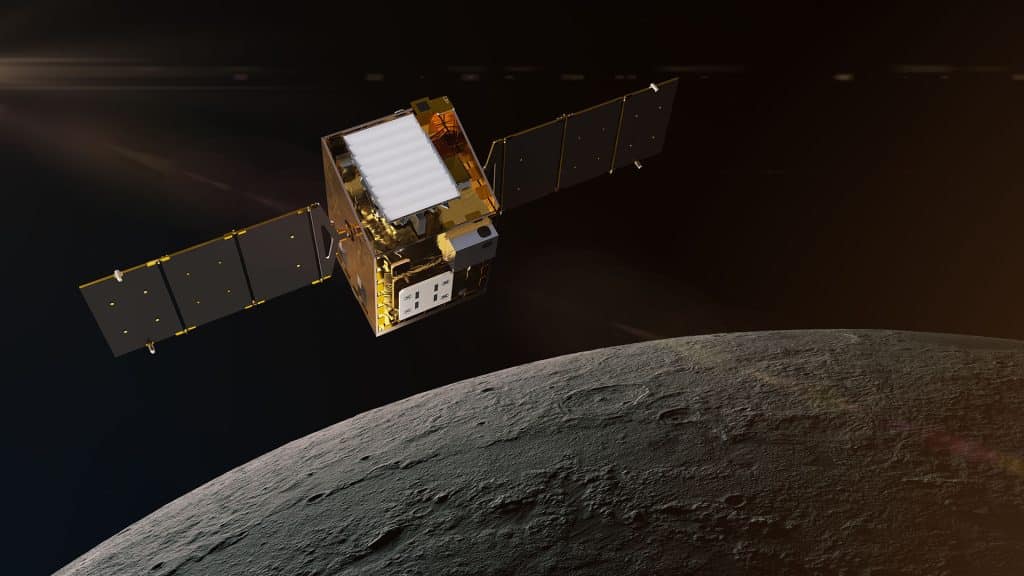Athena’s Lunar Mission: Exploring the Moon’s Secrets

A groundbreaking lunar mission is set to launch later this month, featuring a rocket-powered hopper named Athena. This innovative spacecraft will carry multiple payloads, including a small robotic explorer called Gracie. Developed through a collaboration between Intuitive Machines and NASA, Gracie aims to explore the Moon’s surface in unprecedented ways. The launch is scheduled to take place from Florida’s Space Coast, with a four-day window opening on February 26. If all goes as planned, Athena will land on a plateau approximately 160 kilometers from the Moon’s south pole. This region is believed to contain valuable water ice deposits, making it a prime target for scientific exploration.
Gracie’s Mission Objectives and Design
Gracie is designed to perform five controlled hops across the lunar surface. Each hop will utilize thrusters to propel the robotic explorer. The first hop is expected to reach a height of 20 meters. Following this, Gracie will make progressively higher leaps, culminating in a descent into a shadowed lunar crater known as Crater H. This crater is located about 500 meters from Athena’s landing site and has a depth of around 20 meters.
Trent Martin, Senior Vice President of Space Systems at Intuitive Machines, emphasized the importance of Gracie’s design during a NASA press conference. The hopper is engineered to operate in extreme lunar conditions. Its final hop aims to explore the crater floor, a location that could provide valuable insights into the Moon’s geological history. To ensure continuous communication during this phase, the mission will utilize Nokia’s Lunar Surface Communication System. This system aims to establish the first 4G/LTE network on the Moon, enhancing data transmission capabilities for future missions.
Scientific Exploration and Data Collection
Gracie’s mission is not just about hopping; it is also focused on scientific exploration and data collection. The robotic explorer is equipped with advanced onboard instruments designed to gather crucial information about the lunar environment. A key feature is the ‘water snooper’ sensor, which will detect water ice in the surrounding area. This capability is vital, as water ice could be a critical resource for future lunar missions and potential human habitation.
In addition to the water snooper, Gracie is fitted with high-resolution cameras. These cameras will capture images of the lunar surface and document the hopper’s movements. The mission aims to demonstrate alternative exploration methods beyond traditional rover-based designs. If Gracie succeeds, it could pave the way for new strategies in lunar exploration. The data collected during this mission will contribute to our understanding of the Moon’s resources and geological features, potentially influencing future missions and exploration initiatives.
Additional Payloads on Athena
Athena will carry several other significant payloads alongside Gracie. One of the key experiments is NASA’s Polar Resources Ice Mining Experiment 1 (PRIME-1). This experiment will conduct subsurface sampling using a drill capable of reaching depths of one meter. A mass spectrometer will analyze these samples for signs of water and other volatile compounds, providing insights into the Moon’s resources.
Another important payload is the Mobile Autonomous Prospecting Platform (MAPP), developed by Lunar Outpost. MAPP will explore the lunar surface using high-resolution optical and thermal cameras. This exploration will help identify potential sites for future missions. Additionally, a smaller rover known as AstroAnt, developed by the Massachusetts Institute of Technology, will be deployed from MAPP. AstroAnt will collect temperature data, further enhancing our understanding of the lunar environment.
Expected Landing and Operational Timeline
If Athena’s landing is successful, operations on the Moon are expected to last approximately ten Earth days. During this time, the lander and its payloads will function until the lunar night sets in, which will cut off solar power. This mission follows the success of Intuitive Machines’ IM-1 mission, which landed the Odysseus spacecraft on the lunar surface in February 2024. This marked the first private soft landing on the Moon. Despite facing minor landing issues, Odysseus provided valuable insights that set a precedent for future commercial lunar missions.
Moreover, additional lunar missions by private companies are currently underway. Notable examples include Firefly Aerospace’s Blue Ghost and Tokyo-based ispace’s Resilience lander. Both missions were launched aboard a Falcon 9 rocket in January. These efforts highlight the increasing involvement of the private sector in exploring and utilizing lunar resources, paving the way for a new era of space exploration.
Observer Voice is the one stop site for National, International news, Sports, Editor’s Choice, Art/culture contents, Quotes and much more. We also cover historical contents. Historical contents includes World History, Indian History, and what happened today. The website also covers Entertainment across the India and World.
Follow Us on Twitter, Instagram, Facebook, & LinkedIn

